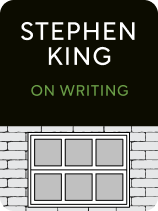

This article is an excerpt from the Shortform summary of "On Writing" by Stephen King. Shortform has the world's best summaries of books you should be reading.
Like this article? Sign up for a free trial here .
Do you want to know how to write a good character backstory? How important is it to have a backstory in your book?
In order to know how to write a good character backstory, you’ll need to first know about your characters and their life. With good research, you can write a good backstory.
Keep reading to find out how to write a good character backstory.
Stephen King’s Advice on How to Write a Good Character BackStory
Back story is everything that happened before your story starts. For a character who’s 30 years old, the character’s entire life history can theoretically all be back story (as well as the life histories of every other character).
Like pace, you can have too little or too much back story. Too little and your character’s situation and motivations are unclear. Too much and you bore the reader. That’s why learning how to write a good character backstory is important,
Stick to the backstory that is relevant to your story. Everyone has a life history; most of it is not interesting. Leave out all the boring parts.
- In a draft for Bag of Bones, the character Mike had 3 pages about his community service work the year after his wife died. King thought the back story illustrated how Mike had writer’s block and what he did with his time. Tabitha said, “who cares?”
You can weave in back story in a more graceful way than straight narration. To show that a character is divorced, don’t have him say, “Hi there, ex-wife.” Talk about the fading tan line on his ring finger.
King personally dislikes in medias res, the starting of a story in the middle of the action with no back story. This requires flashbacks, which he finds clumsy. King prefers going in relatively straight chronology.
Research
Research concerns the details that make a story sound realistic. While writing about a field you know nothing about—say, the judicial procedures of rural Kentucky—you will need to research.
Like back story, keep only the research that is relevant. The readers aren’t reading your story to learn the intricate details of what you researched. Like a spice in a recipe, the research is an adornment, not the meat.
There are some writers who seem to make their novels practically all about the research. Arthur Hailey wrote novels that seemed like parables for industry dissections—banking, airports, automobile manufacturing. While King still finds these novels to be solid, he suspects they appeal to readers who find fiction a guilty pleasure, and the guise of learning from a novel absolves them of guilt.

———End of Preview———
Like what you just read? Read the rest of the world's best summary of Stephen King's "On Writing" at Shortform .
Here's what you'll find in our full On Writing summary :
- Stephen King's personal writing habits that led to superstar books like Misery and It
- How to make a story and characters feel real
- Why you should never use adverbs






